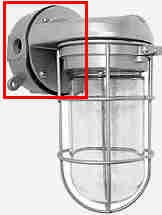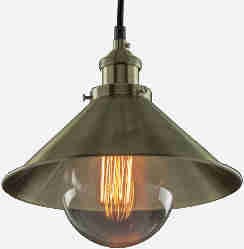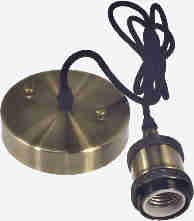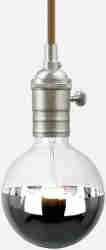Magnetic Particle Inspection
The process of inspecting surfaces and slight subsurfaces of metal for discontinuities, cracks and fractures. This process commonly makes use of the emission spectrum of blacklight blue bulbs in order to effect detection. Also known as Magnafluxing.
Mains Voltage
The European version of the American phrase "Line Voltage". It refers to the common "standard" voltage provided at the receptacle.
Marine
Pertaining to waterway navigation or application. This includes lighthouses, beacons, buoys, underwater lighting, fishing, etc. Marine bulbs are most commonly called navigation bulbs.
Maximum Overall Diameter
Abbreviated as "MOD". This is the maximum outer diameter of a bulb's shape. The MOD of North American bulbs is measured in eighths of an inch whereas the rest of the world measures in millimeters.
Tip: A quick way to convert back and forth between MODs measured in millimeters and eighths of an inch is to use 0.315.

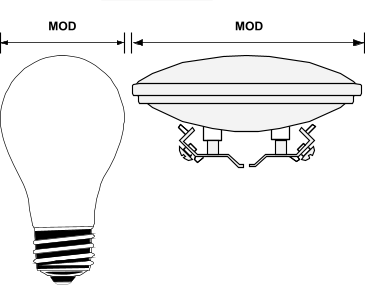
Tip: A quick way to convert back and forth between MODs measured in millimeters and eighths of an inch is to use 0.315.


Maximum Overall Length
Abbreviated as "MOL". This is the maximum length of a bulb from absolute end to the absolute opposite end. The MOL of North American bulbs is measured in inches while every other country uses millimeters.
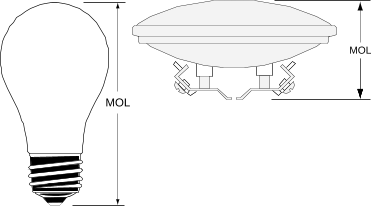

Mean Lumens
The lumen output of a light source measured at a particular point in its life. The point in its life at which a light source is measured depends on its type i.e. fluorescent, HID, LED.
Mean Spherical Candlepower
Abbreviated as MSCP.
Medium Base
Mercury
- A naturally occurring element that is used in a number of different discharge bulbs.
- A common question comes up as to what actions should be taken if a fluorescent/compact fluorescent bulb is broken. There have been stories in the news where people have literally sealed off rooms with plastic and considered the area to be a crazy biohazard containment area. This is completely unnecessary. There are some basic steps to take when this happens but there is no reason to lose all sense of reason and panic. Here are the instructions from the EPA: Instructions
-
Here is a quote taken from an Energy Star document regarding the mercury content in compact fluorescent bulbs (CFLs):
"Myth #4: Mercury levels will increase with CFLs.
Overall mercury levels will decrease. Using more energy with less efficient products means more mercury enters our environment because energy production from coal (51%) is the main emitter of mercury in the U.S. The more energy you use, the more mercury that enters our environment. Even though CFLs contain small amounts of mercury, you actually prevent more mercury through the energy savings by using CFLs. Even if you don't consider the mercury benefits from reduced energy use, CFLs are still just a tiny fraction of human-caused mercury emissions - about 0.1%." - Mercury when vaporized and excited by an electrical charge emits a specific set of wavelengths called the mercury emission spectrum. Many of these wavelengths are in the ultraviolet (UV) spectrum and thus unfiltered exposure can be quite dangerous to living organisms of any sort. Mercury is used in essentially all discharge bulbs such as mercury vapor, metal halide, high and low pressure sodium, compact and standard fluorescent and germicidal bulbs.
Mercury Emission Spectrum
See Mercury.
Mercury Vapor Bulb
Abbreviated as "MV". Its ANSI designation is "H". See HID > Mercury Vapor Bulb.
Mesopic Vision
See also Photopic Vision and Scotopic Vision.
Metal Ballast Casing
See Ballast.
Metal Halide Bulb
Abbreviated as "MH". Its ANSI designation is "M". See HID > Metal Halide Bulb.
Metal-X-Vapor
The trademarked name for the Damar line of metal halide bulbs.
Meter
Abbreviated as "m". One meter is equal to 3.28 feet.
Microfarad
Abbreviated as mF. One millionth of one farad. See Farad.
Minecart Bulb
A bulb made for use in mine equipment. The most common bulb has a PAR38 shape and has a medium side prong base. An example is shown below.
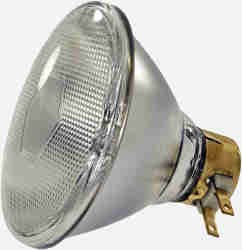
00421D - D 150PAR3FL 130V

Miniature Bulb
An industry name for a wide variety of very small bulbs for use in specialty applications such as indicator bulbs, dashboard bulbs, tail lights and the like. Miniature bulbs come in a wide variety of types including, but not limited to, incandescent, halogen and LED
Miniature Fluorescent Bulb
A name for the line of T2 shaped (tubular, 2/8" diameter) fluorescent bulbs. Their industry description begins with "FM" for fluorescent miniature. An example is shown below:

20374A D FM11T2/835

Mirrored
A chrome-like bulb coating used to direct light in a particular way/direction. Mirrored top bulbs are used where indirect lighting would be preferable. Also sometimes used in specialty applications.
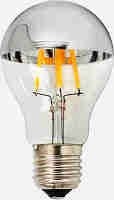


Mirrored
(indirect aesthetics)
(indirect aesthetics)
Mirrored Neck
(very uncommon)
(very uncommon)
Half Mirror
(specialty)
(specialty)



MOD
MOL
Mounting - Fixture
- The following sections will cover a number of different points. Some are methods of installation, some are parts used for installation and some are adapters of sorts.
-
-
Band Mount
A method of fixing light fixture mounting hardware onto a pole using a band that is tightened around the pole. In the examples below the band is highlighted in red.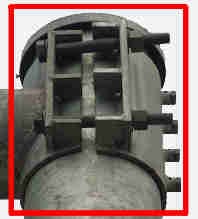
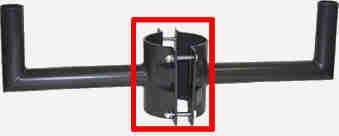
-
Box Mount
This refers to a fixture designed to be mounted to an electrical box. The pictures below are both example of box mounted fixtures. On each picture the electrical box is highlighted in red. The image on the left is a surface/ceiling mount whereas the one on the right is a wall-mount fixture.
Both fixtures are Box Mount and Surface Mount vaportight fixtures -
Bracket
This is a piece of mounting hardware used to mount almost anything to almost anything. Bracket is a universal terms for something that is fixed to something else for the purpose of holding yet another piece of hardware or item. An example is below:
-
Bullhorn
A piece of mounting hardware on which 2 or more fixtures would be mounted. Most often its mounting heads are tenons. It gets its name because of it resembling bull horns.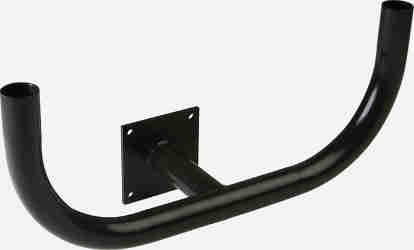
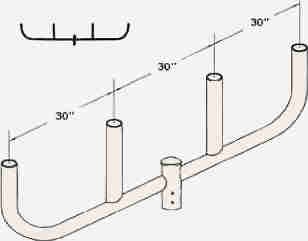
-
Cantilever Arm
An arm that is only mounted on one end and generally extends upwards to some degree to hold a lighting fixture. This only refers to the arm itself. The arm may end in a tenon mount on the end intended to hold the fixture and may then make use of a mast mounting bracket. The picture below shows a cantilever style mast arm (mast mount is in blue) with a tenon at the end (red).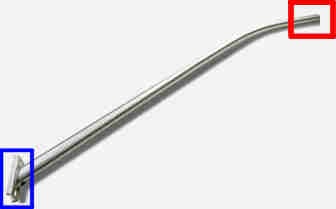
-
Ceiling Mount
Fixture designed to be mounted to the ceiling. The picture below shows an example. See also Mounting > Fixture > Surface Mount.Ceiling Mount
21789AFluorescent Wrap Fixture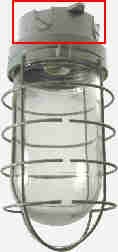
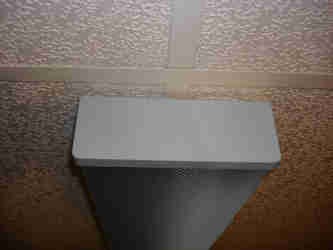
-
Chain/Cable Mounting
A method of mounting a fixture that technically may make use of additional parts and thus the chain is only a part of the mounting mechanism. However, chain or cable mount can still be appropriate. Both of these mounting methods are subtypes of suspension mounting. This example is a pendant mount fixture but could be called a chain mount or pendant/chain mount:Ceiling mount chain pendantJack ChainChain MountCable Mount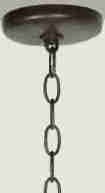

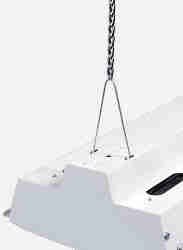
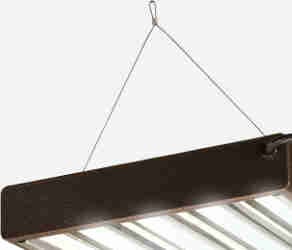
-
Crossarm Mount
A piece of mounting hardware generally made of angle iron that holds one or more light fixtures. In each of the examples below the crossarm mount is highlighted in red.
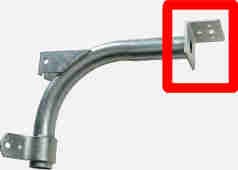
-
Davit
A curved style of arm that is available in single or multi arm configurations.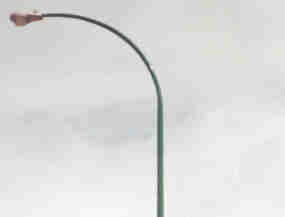
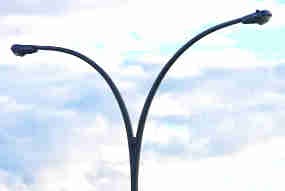
-
Freestanding
This is not a mounting method technically as it actually means no mounting method. However, there are standards set by Underwriter's Laboratories of the maximum base width to height ratio that is safe. This is also affected by the weight of the fixture and the weight and placement of the light source(s). -
Gimbal
A mounting method that allows the actual light source of a fixture to be adjusted at a central point along a single axis in order to direct the light as needed.
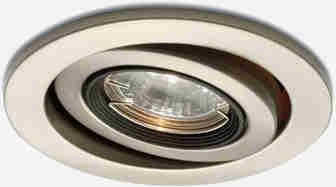
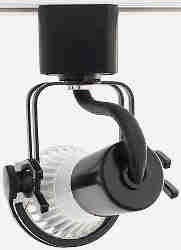
-
Hook
A hook shaped fitting mounted to a fixture through a standard threaded hole and then used to hang the fixture onto an appropriate rafter part.High-bay fixture with a hook mountHook mount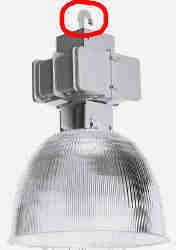
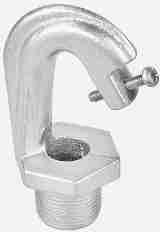
-
Knuckle
A joint used to adjust the position of a fixture. Most commonly the section of the knuckle farthest from the fixture is threaded at its other end to allow mounting into an electrical box plate. By tightening the screw the teeth lock together and thus hold the fixture in place. Most often fixtures that use a knuckle mounting method are smaller. However larger, heavier duty knuckle mounts are available.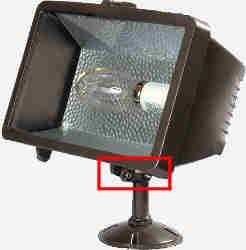
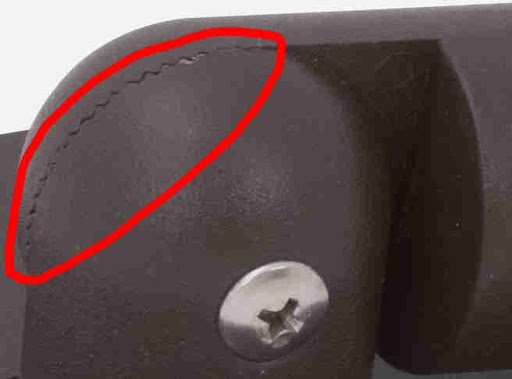
-
Lay-in
"Mounting" method where an installer would lay-in a troffer or panel fixture into the t-bar of a drop ceiling. Below left: t-bar Below right: troffer installed into drop ceiling.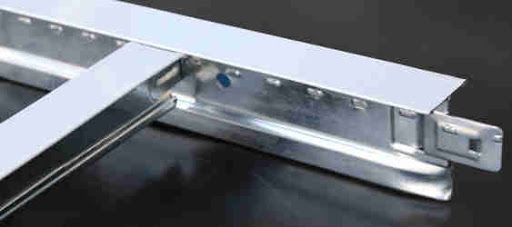
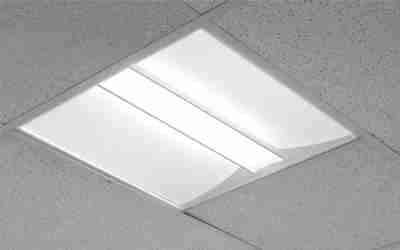
-
Mast Arm
This is the bracket that is mounted to the outside of a pole to hold a light fixture. This bracket is often (but not always) welded to the arm or tenon that is either acting as a mounting method for a fixture or as an adapter to interface with another piece of hardware. The following example is of an arm with a mast mount (blue) and a tenon end (red).
-
Pendant
A fixture that is generally a simple single socket with some form of optics and/or decorative hardware that is mounted to the ceiling and hangs from a cord or chain like a pendant. The fixture may or may not have an integral switch such as a pull chain or twist switch. -
Pole
Poles are made in a variety of materials such as metal, wood, fiberglass and concrete. They come in a variety of heights, diameters, finishes, colors and styles which all vary based on the application and need. Metal poles can be found in square or round versions with both of those being available with either straight or tapered sides.Square Steel/Aluminum Straight & TaperedRound Steel/Aluminum Straight & TaperedWoodConcrete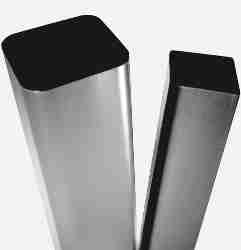
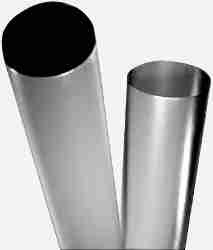
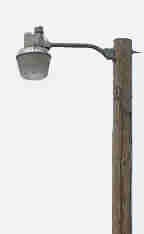
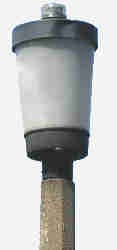
-
Pole/Post Top
Pole/post top fixtures designed to be mounted on top of a pole or post. Most commonly this type of fixture and/or its mounting hardware makes use of a slipfitter for pole/post top mounting and thus this really isn't a mounting method but a type of fixture. Pole/post top fixtures are of a particular style that generally is intended to distribute light downwards in a 360 degree fashion.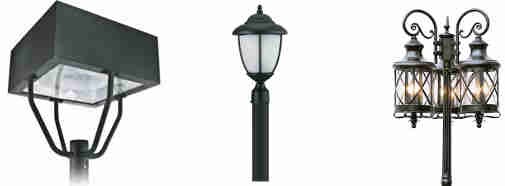
-
Slipfitter
A fitting or piece of hardware designed to slip onto a pole or tenon. The example below to the left shows a slipfitter fixture with the slipfitter fitting highlighted in red. The example to the right is of a piece of hardware designed to fit directly onto the top of a pole. Installing a slip fitter is to "slip fit" it.Fixture with a slipfitter mountSlipfitter head for a pole top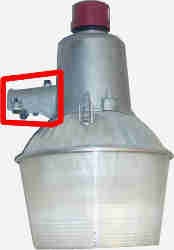
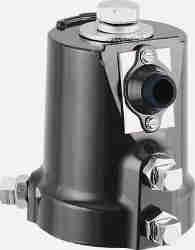 Slipfitter for square pole with 2 tenonsAdjustable knuckle with slipfitter base
Slipfitter for square pole with 2 tenonsAdjustable knuckle with slipfitter base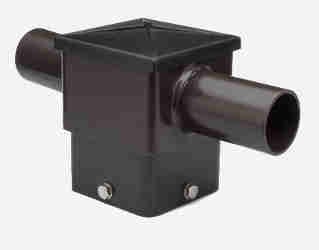
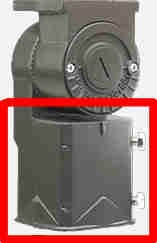
-
Surface Mount
Fixture designed to be mounted onto a surface, most commonly the ceiling. Here is an example:
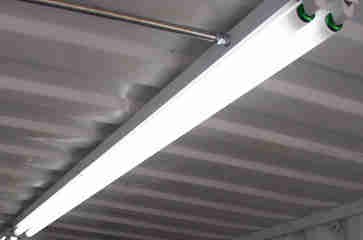
However, saying that a fixture that will be mounted on the ceiling uses this mounting method as opposed to for example just saying "ceiling mount" generally means that the fixture is usually mounted via a method other than surface mounting has been mounted on the surface. An example would be a troffer style fixture being installed on the surface as opposed to lay-in style. The picture below shows an example:See also Mounting - Fixture > Ceiling Mount.TrofferTroffer in Surface Mount Box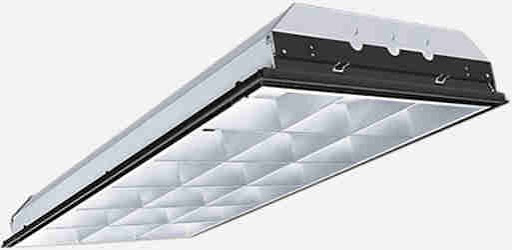

-
Suspended/Suspension
See Mounting - Fixture > Chain/Cable Mounting. -
T-Bar Mounting
Fixtures can be mounted directly to a T-bar in drop ceilings so that they rest on the surface as opposed to being installed in a "lay-in" fashion.
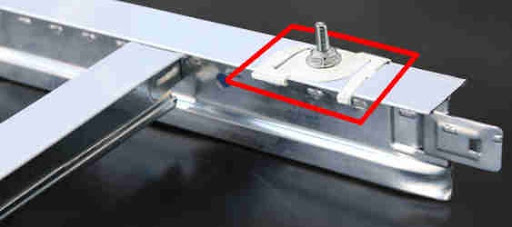
-
Tenon
A cylindrical protrusion that comes in a number of standard diameters designed to accept a slipfitter or band type mount. Because a tenon comes in standard sizes the mounting hardware that is designed to be compatible with tenons is almost endless.
Tenon size is generally stated as the capital letter "T" and then a number. Outside diameter (OD) Sizes are T20 - 2 3/8" (2.375"), T25 - 2 7/8" (2.875"), T30 - 3.5" and T35 - 4")Square pole bolt-in tenon adapterRound pole to tenon reducerWall mount right angle tenonWall mount bullhorn with two tenon mounts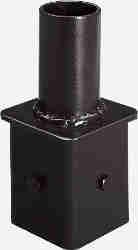

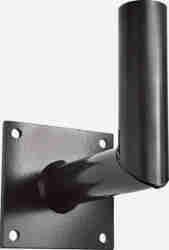
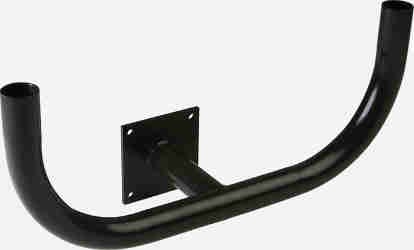
-
Track Mount
Fixture (head) designed to be mounted into a track (track lighting). Here is an example:

-
Trunnion Mount
This is a mount that has a pivoting joint. Some fixture manufacturers refer to a trunnion mount as a yoke mount (Cooper-Crouse Hinds). However, in the majority of cases when a mount is referred to as a trunnion mount the joint will be located towards the middle of the mount itself instead of towards one end as it is common with traditional yoke mounts. In the examples below the entire mount is highlighted in red while the trunnion joint is highlighted in blue.
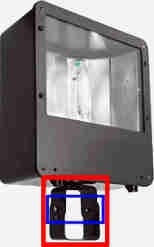
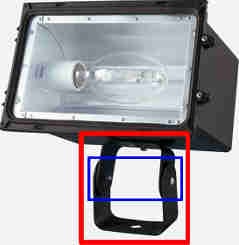
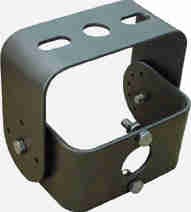
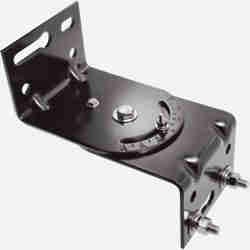
-
Truss Arm
This is a design used for very long arms and/or those that must support great weight at a comparatively significant distance from the mounting bracket. The example below is of a cantilever-truss style mast arm.
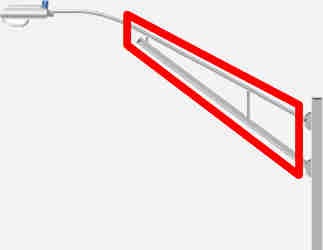
-
Wall Mount
Fixture designed to be mounted to the wall. Here is an example:Wall Mount - 21606AWall mount (red) arm with tenon end (blue)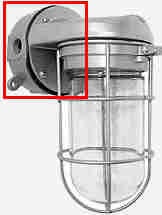
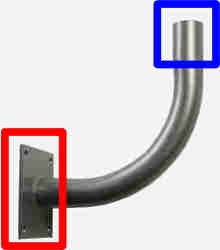
-
Yoke Mount
Fixture designed to be mounted to a yoke which is then mounted to the desired surface such as being anchored to a concrete footing. Here is an example: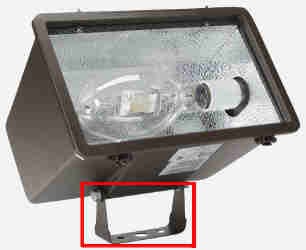
-
Mounting Bracket
See Mounting - Fixture.
Mounting Bracket
See Mounting - Fixture.
MSCP
See Mean Spherical Candlepower.
Multi-Tap
See Ballast > Power Input > HID.
NAFTA
See North American Free Trade Agreement.


